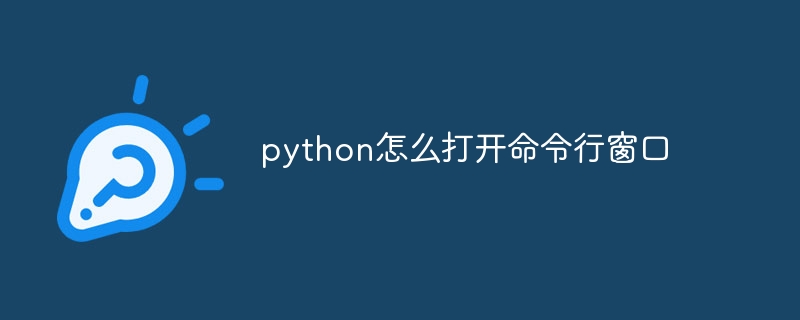如何在 Python 中打开命令行窗口?导入 subprocess 模块,使用 subprocess.Popen 创建一个对象,设置 shell=True(可选),使用 Popen 对象与命令行窗口交互。

如何使用 Python 打开命令行窗口
在 Python 中打开命令行窗口的方法很简单。以下步骤将指导您完成此过程:
1. 导入 Subprocess 模块
首先,您需要导入 Python 的 subprocess 模块,该模块允许您在 Python 代码中执行系统命令。
import subprocess
2. 创建一个 subprocess.Popen 对象
接下来,使用 subprocess.Popen 创建一个对象,该对象表示要执行的命令。在这里,我们指定 cmd.exe 或 command.com(对于 Windows)或 bash(对于 macOS/Linux)。
subprocess.Popen("cmd.exe", shell=True)
3. 设置 shell=True(可选)
在 Windows 中,设置 shell=True 是可选的,但它允许您在命令行中执行更复杂的命令。在 macOS/Linux 中,此参数没有效果。
4. 使用 Popen 对象
您现在可以使用 Popen 对象与命令行窗口进行交互:
示例代码:
以下是使用 Python 打开命令行窗口并运行一些命令的示例代码:
import subprocess
# 打开命令行窗口
subprocess.Popen("cmd.exe", shell=True)
# 在命令行中键入命令并按回车
subprocess.Popen("echo Hello world!", shell=True)
# 发送输入并获取输出
input_text = "This is my input"
output, error = subprocess.Popen("echo " + input_text, shell=True, stdout=subprocess.PIPE).communicate()
print(output.decode()) # 打印输出注意:
& 或 && 符号串行或并行执行多个命令。Popen 对象的其他方法来控制命令的输入、输出和错误处理。以上是python怎么打开命令行窗口的详细内容。更多信息请关注PHP中文网其他相关文章!




